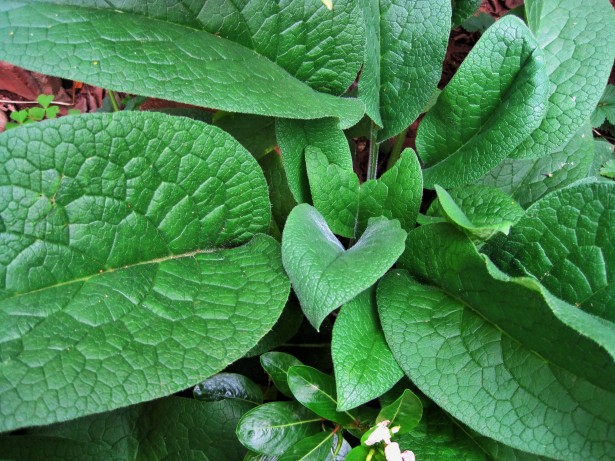Free medicine doesn’t just come from the government (kidding!).
The wonder plant comfrey is one of the easiest herbs to grow and among other amazing benefits it has been known to speed healing in bruises and broken bones.
One hardly needs a green thumb to take advantage of this plant’s healing properties. Comfrey is most commonly grown from root divisions. These can be purchased online from your favorite gardening website, or even on Amazon. But even easier, they can easily be taken out of ground from any mature comfrey plant that you have access to without doing the slightest damage to the existing parent plant.
If making your own cuttings, simply dig up the entire parent plant, and cut off the existing leaves. You can save them for poultice or just “chop and drop” them near any plant that you wish to add nutrients to.
Then divide the root base-which is about all there is going to be left of the plant after removing the leaves-into as many pieces as you can given the plant that you have to work with. Cutting the pieces too small may reduce the chances of survival or at least increase the time it will take for the cutting to regrow, try going with pieces about the size of your fingers.
Next, all you need to do is put the new cuttings in containers with potting soil, keep them moist, but not saturated, and in indirect sun for around two weeks. When your new cuttings first sprout, it will be only time that these hard plants are vulnerable, so try to keep them on a start table to reduce pests.
Once established, these plants will continue to produce medicinal leaves and grow more roots, allowing you to easily and exponentially grow your comfrey supply.
Once you have a hearty supply of comfrey in your garden, turning it into useful medicine for treating burns, bruises, sprangs, and broken bones is just as easy as growing it.
First, harvest the leaves. Consider leaving at least 20% of each plants leaves intact will help speed regrowth, but if necessary comfrey can recover from being run down with a lawn mower so don’t worry too much.
Then puree, the leaves in a blender that you don’t use for food-or at least one that you will clean thoroughly before using again for food, since comfrey does contain hepatotoxic pyrrolizidine alkaloids which can cause liver damage if ingested.
If no blender is available, the leaves can be finely chopped and beaten to a juicy pulp. The puree or pulp can then be placed directly on the wound site and wrapped with plastic wrap or cellophane, which would in turn be wrapped in an ace bandage to keep it in place. This can be left in place over night and changed out in the morning.
This isn’t all this plant has to over though, so check back soon for more information on how, among other things, comfrey can increase food production and help with weed control.
If you liked that, you might also like:

